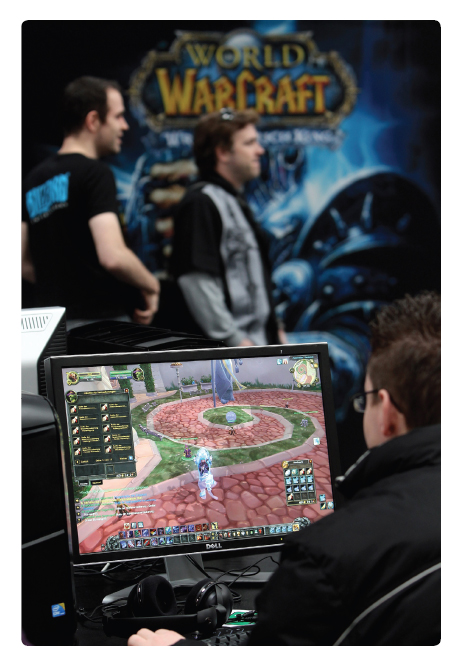Functions of Nonverbal Communication
Although nonverbal communication seems like something that just happens, it isn’t random, nor is it a pointless companion to verbal messages. Instead, it is purposeful and serves many functions. By understanding these functions, you can better match your nonverbal communication to the demands of different situations.

Walking into the kitchen, Steve found his son Kyle laughing over his laptop: “Look at how many people joined my Rave!” Moving closer to the screen, Steve was stunned to see Kyle’s World of Warcraft character thrusting his hips and gesturing in a bizarre dance, surrounded by other dancing characters. Suddenly there was an on-screen flash, and Kyle’s character fell to the ground. “That was rude!” Kyle exclaimed. Another player had killed Kyle’s character, ending the impromptu dance festival.
In World of Warcraft (WoW), a massively multiplayer online role-playing game, characters don’t just wage war, acquire abilities, advance through levels, and pursue quests. They communicate. Unlike online games of old, where such communication was limited to text, WoW allows players to convey a broad range of nonverbal expressions. To communicate nonverbally, players use “emotes”—pregenerated actions you trigger by typing in certain code words. Most emotes are purely nonverbal. For example, players can wave good-bye (“/farewell”), raise an eyebrow inquisitively (“/eyebrow”), scowl (“/scowl”), point at a target (“/point”), make taunting gestures (“/taunt”), or offer congratulatory high fives (“/highfive”).
These virtual nonverbal messages serve a host of functions. Players can directly convey meaning (“you motion for everyone to follow”), express emotion (“you run around in a frenzied state of panic”), present themselves to others in a specific way (“you bow down graciously”), manage interactions (“you tap your foot—hurry up already!”), and define relationships (“you blow a kiss to another person”). They can even present themselves to others as a fun person to dance with—at least until another character “rudely” attacks them! In the real world, nonverbal communication utilizes these five functions as well. See Figure 6.3